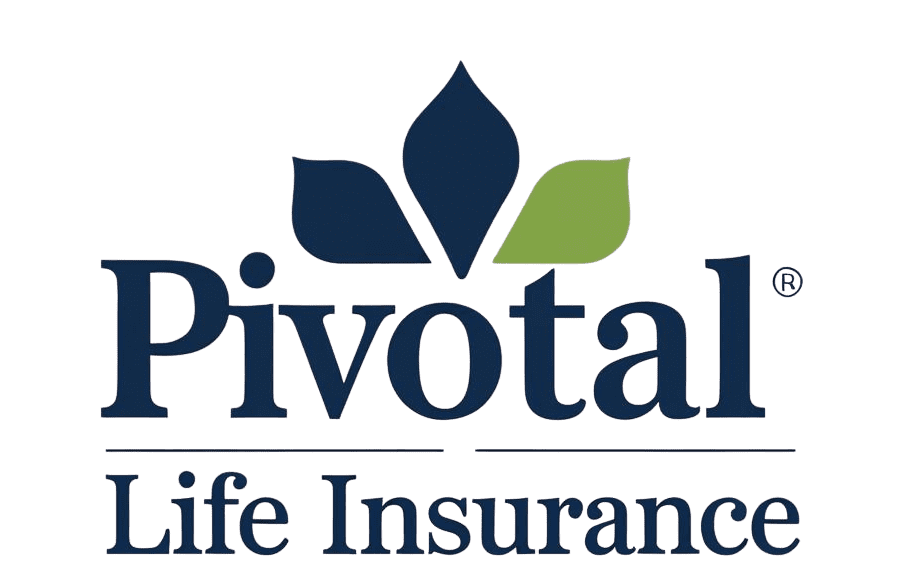Dependent life insurance is a form of coverage that pays a death benefit if a covered spouse, child, or other eligible family member dies.
It’s often offered through employer group plans or as an add-on to a personal policy. Though many people think only of life insurance for themselves, dependent life insurance can help pay final expenses (like funeral costs) when a loved one dies.
In this guide, we’ll explain what dependent life insurance is, who qualifies, what it covers, and why it matters – especially in the U.S. (including tax rules and military benefits). You’ll learn key terms, practical tips, and what to watch out for so you can decide if this coverage makes sense for your family.
What Is Dependent Life Insurance?
Dependent life insurance is a type of life insurance for your family. Instead of covering you (the policyholder), it covers your dependents – typically your spouse and children, and sometimes other relatives you support.
If a covered dependent dies, the policy pays a death benefit to you or your named beneficiary. The benefit is usually a fixed lump sum intended to help with funeral costs or other obligations.
For example, Bankrate explains that this insurance is “tailored to pay death benefits if a covered spouse, child, or other dependent passes away”. In many cases, it’s offered through an employer’s group plan (often called voluntary dependent life insurance because the employee pays the premiums).
Dependent life insurance typically covers final expenses rather than replacing lost income. Because dependents are usually non-income earners, policies are designed to cover things like funerals and burial.
As one source notes, these policies often limit coverage “to the funeral and burial expenses of the insured,” with common benefit amounts in the range of $4,000 to $10,000. This makes sense given that the median U.S. funeral cost is around $8,300.
In practice, you might see a plan offering increments of coverage (for example, $2,000, $5,000, or $10,000 per dependent). The exact coverage and cost depend on the plan rules, which we’ll discuss below.
Definition: Dependent Life Insurance is a policy that pays a benefit to the policyholder if a covered dependent (spouse, child, etc.) dies during the term. It is often part of an employer benefits package and is used to help cover end-of-life expenses.
Why consider this coverage?
Losing a loved one is devastating enough without the added financial stress. Dependent life insurance provides a small safety net for families by handling funeral bills or other immediate costs.
For example, Business Insider notes that it “covers funeral expenses and costs of losing a non-income-earning spouse,” so the family isn’t hit with a large bill at an already difficult time. In other words, it is a way to protect your family’s financial stability in the event of a tragedy.
Coverage, Costs, and How It Works

Most often, dependent life insurance is offered as a voluntary benefit through work. As ValuePenguin explains, “voluntary dependent life insurance” or “dependent group life insurance” is available through employer benefit plans. You pay the premiums (usually by payroll deduction), and any payout goes to you if your covered dependent dies. The employer benefit booklets will spell out the specifics, but here are common features:
1. Benefit amounts
Group plans typically offer coverage in fixed dollar amounts. For example, you might be able to buy $2,000 increments of coverage per child, up to a set maximum like $10,000. Spousal coverage limits are often higher – sometimes tied to a percentage of your own coverage. ValuePenguin notes that an employer might let you buy dependent coverage “up to 50% or 100% of your own supplemental coverage”.
2. Premiums
Premiums for dependent life insurance vary by amount and age of the dependent. Children’s coverage is usually very inexpensive. For example, one plan might charge as little as $0.15 per $1,000 of coverage each month for a child, meaning $10,000 of coverage would cost only $1.50 per month. Spouses cost more because adults have a higher mortality risk (e.g. $0.60 per $1,000 per month). Premiums are typically deducted from your paycheck after taxes.
3. Automatic beneficiary
In most group dependent life plans, you (the employee) are automatically the beneficiary. That means if your covered spouse or child dies, the death benefit goes to you. (In effect, you are insuring them.)
4. Guaranteed issue vs. evidence of insurability
Often, small amounts of coverage for children are “guaranteed issue” (no health questions). Higher amounts or spousal coverage might require answering health questions or showing good health (especially if you enroll outside of open enrollment).
Example: Suppose you work at Company X. They offer voluntary dependent life insurance. You decide to buy $10,000 coverage for your spouse and $10,000 for all your children. The premium costs $2 per month. If your spouse dies while the policy is active, you receive $10,000 tax-free to help with funeral costs.
Many employer plans also include optional “supplemental” or “voluntary” life insurance that is paid 100% by the employee.
Dependent life falls into this category: the employee pays the premiums for a benefit that extends to family. Blue Shield, for instance, describes supplemental dependent life insurance as “100% employee-paid” extra protection for employees and their dependents.
Sometimes employers even automatically provide a small basic amount (e.g. $2,000 for a spouse) at no cost, and you can buy extra on top of that. Check your plan documents for terms like basic dependent life, voluntary dependent life, optional dependent life, or supplemental life coverage. All of these generally mean the same thing: life insurance covering family members.
Coverage Details and Limits
It’s important to read your plan’s details. A few key points often apply:
Children: Group plans usually allow all your eligible children (biological, adopted, stepchildren, legal wards) to be insured. However, there’s typically an age limit – often up to 26 years old, similar to health insurance rules. After a child turns the plan’s age cutoff, their coverage ends. Disabled children can sometimes stay covered beyond the age limit if you provide proof of disability.
Spouses and partners: Eligible spouses are usually defined broadly. Any person legally recognized as your husband or wife counts – in most states, that includes common-law spouses. Some plans also cover registered domestic partners or civil union partners if state law recognizes them. Check your plan: some do not include domestic partners.
Other dependents: Rarely, group plans may cover other relatives (like an older parent or disabled adult child) if that person depends on you financially. This is uncommon and depends entirely on your employer’s plan rules.
Coverage conversion: If you leave your job (or retire or divorce your spouse), you usually lose the group dependent coverage, since it’s tied to employment. However, many plans allow your spouse’s dependent life insurance to be converted to an individual policy in that event. This means the spouse can keep life insurance without a new health exam, though the new policy might be pricier or have limited options. (Note: Child coverage typically cannot be converted; it simply ends when their age or eligibility changes.).
Example Scenarios
Working parent: You have a job that offers $5,000 of dependent life insurance for your children and $50,000 for your spouse as part of your benefits. You pay a few dollars a month for each. If your child unfortunately passes away, the $5,000 helps cover the funeral.
Sole breadwinner: Your spouse doesn’t work outside the home. If they died, you’d be left to handle day-to-day tasks and child care. Dependent life insurance could pay you a lump sum to cover living expenses or hire help while you grieve.
Military family: If you are in the U.S. military with full Servicemembers’ Group Life Insurance (SGLI) coverage, Family SGLI (FSGLI) automatically provides life insurance for your spouse and children. It offers up to $100,000 for a spouse and $10,000 per child (free for children) with no medical exam, so it’s effectively a form of dependent life insurance at a very low cost.
Who Qualifies as a Dependent?
![]()
Not everyone can be insured as your dependent. Plans have specific rules for eligible dependents. Generally, the following qualify in most U.S. plans:
Spouse: Your legally married husband or wife is almost always eligible. Some states recognize common-law marriages, which may count. Many group plans do allow domestic partners, but some do not unless explicitly stated.
Children: Typically, any child you support can qualify. This includes biological children, stepchildren, legally adopted children, and children for whom you are the court-appointed guardian. Coverage usually ends when a child turns a certain age (often 26) or leaves school. If a child is disabled or a full-time student, some plans extend the age limit (you’ll need to provide proof of dependency and disability).
Other dependents: Some plans allow other dependents (e.g., a grandchild you care for, or your own parent), but this is not common. If your plan says “other eligible dependents,” read the fine print: such dependents usually must live with you, be unmarried, financially dependent, and have no other group life coverage.
Military dependents: U.S. military members have a special program. If you have full SGLI coverage, your spouse and children under 18 (or older if disabled or students) are covered under Family SGLI (FSGLI). FSGLI is essentially dependent life insurance provided by the government: up to $100,000 for a spouse and $10,000 for each child, at very low cost (children’s coverage is free, spouse’s coverage is age-rated). This program automatically covers your family as long as you’re on active duty or in the reserves with full SGLI.
What Does Dependent Life Insurance Cover?

Unlike a personal life insurance policy that replaces your income, dependent life insurance typically covers final expenses and short-term needs. When a covered dependent dies, the policy pays a lump sum (the death benefit) to you. You can use this money in any way, but commonly it goes to:
Funeral and burial costs: This is the primary purpose. Bankrate notes that most group dependent policies have limits around typical funeral costs. For example, if a child dies, the benefit might pay for a burial or cremation, flowers, and related expenses.
Outstanding debts: It can help pay off any debts tied to that person (medical bills, car loans) so the family isn’t left with those bills.
Short-term living expenses: If your spouse were a homemaker, you might need funds for child care or household help. The benefit could help cover living costs while you adjust to the change.
Importantly, the coverage amount is usually much smaller than a typical income-replacement life insurance policy. You’ll often see a child’s coverage measured in the low thousands and a spouse’s in the low tens of thousands. This is because it’s meant as a modest cushion, not complete financial protection.
For instance, one insurer notes group child coverage often “ranges between $5,000 and $20,000,” while spousal benefits are higher but still limited.
Cost and Tax Implications
Premium costs are generally low for dependent coverage, but they vary by plan. Because group plans leverage scale, insurers can offer very affordable rates.
Premiums depend on the amount of coverage and the age of the dependent. (Children’s low risk means very cheap premiums; spouses cost more.)
For example, a plan might charge $0.15 per $1,000 of coverage for children and $0.60 per $1,000 for a spouse. Always check how your payroll deductions work – often, dependent life premiums are taken from your paycheck after taxes.
Tax treatment: In the U.S., the tax rules for dependent life insurance are straightforward but important. Under IRS rules, if an employer pays for any part of dependent life coverage, amounts above $2,000 of coverage per person become taxable as imputed income. In practice, this means:
If you pay all the premiums for your dependent coverage, no portion is taxable. You already paid with after-tax dollars.
If your employer pays for dependent life insurance, it’s not taxable as long as the benefit for each dependent is $2,000 or less. That $2,000 threshold is considered a low-value fringe benefit by the IRS.
If the employer pays for more than $2,000 of coverage on a dependent, then the entire cost of the policy above that amount is counted as taxable income to you. The IRS has tables (based on age and coverage amount) to calculate how much tax is owed. For example, if your employer paid for $10,000 of coverage on your spouse, you’d pay income tax on the cost that corresponds to $8,000 (since $2,000 is tax-free).
In short, dependent life insurance payouts are generally tax-free, but be aware of possible “imputed income” if your employer is paying for the benefit value.
Pros, Cons, and When to Use It
Dependent life insurance has both benefits and drawbacks. Understanding these can help you decide if it’s right for your family.
Pros (Advantages):
Low cost, easy coverage: You usually don’t need a medical exam for dependents, so it’s easy to obtain coverage for a child or spouse, even if they have health issues. Many group plans allow coverage amounts without health questions up to a certain limit.
Covers final expenses: It guarantees some money is there to pay for funerals and immediate costs if a dependent dies. This is crucial because funeral bills can strain any budget. Bankrate notes that this benefit is often the main reason people buy it.
Convenient payroll premiums: Premiums are typically deducted from paychecks, making it a convenient way to pay.
Peace of mind: Even a small benefit can provide comfort that your family won’t face an unexpected large expense.
Cons (Drawbacks):
Limited benefit amount: The death benefit is usually small. If your spouse dies and you have young children, $10,000 or $20,000 may not stretch very far, and you may still need additional coverage. Bankrate advises that because these benefits are low, “individual coverage may also be necessary”.
Loss of coverage if you leave job: Since it’s typically a group plan, if you change jobs or retire, you lose the dependent life insurance unless you convert it (for spouses) or find a new policy. That means your family could be uninsured if you’re no longer employed.
Premiums rise with age: Group rates for spouse coverage often increase at set intervals (e.g. every five years as your spouse ages). So, a cheap rate now could double in a decade.
Tax implications: If your employer subsidizes the coverage, the tax on imputed income could slightly reduce its value for you.
Is it worth it?
That depends on your situation. If an employer offers dependent life insurance at very low cost, many financial experts say it’s wise to take at least minimal coverage. It’s especially useful if your spouse is not working or if you have significant funeral costs to consider.
However, remember that this shouldn’t replace your own life insurance. Think of dependent life as an extra cushion for your family’s budget, not the main protection.
Business Insider suggests evaluating your family’s needs and the cost: “Review your finances, worst-case scenarios, and insurance premium costs to decide if it makes sense for you.
Common Questions and Next Steps
How does this differ from a life insurance rider? A life insurance rider for children is an add-on to your own policy that pays a benefit if a child dies. Dependent life insurance is usually a separate policy (often through work) that pays to you as the policyholder if a dependent dies.
Both serve a similar purpose (covering dependents) but are structured differently. Riders often convert to permanent insurance, whereas group dependent plans usually do not.
Should my children have their own policy? If you want more coverage than your employer offers, you can also buy individual policies. There are term life policies specifically for children, or whole life policies that build cash value.
However, these tend to be more expensive than group rates. Many families rely on the small group benefit to cover the bare minimum (funeral) and don’t buy extra, unless there is a special need.
Next steps: – Check with HR: If you’re employed, ask your HR or benefits department what kind of dependent life insurance is available. Find out the coverage limits, costs, and eligibility rules.
Use tools: Consider using a funeral cost calculator or insurance premium calculator online to see how much coverage you might need. The National Funeral Directors Association and other sites can give updated cost estimates.
Compare options: If your employer doesn’t offer dependent life insurance or you want more coverage, look into private insurers or separate riders. You can often compare rates on insurance websites or through an agent.

